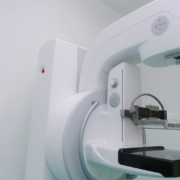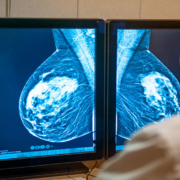17 July 2019
There are no standard guidelines for mammographic screening for men who have no symptoms (such as a lump), even if they are considered to be at high risk for developing breast cancer. A study recently published in Breast Cancer Research and Treatment* evaluated the performance of screening mammography in asymptomatic high risk men.
The researchers reviewed a prospective institutional database at the Memorial Sloan Kettering Cancer Center, evaluating cases from 2011 – 2018. 827 men underwent mammography during that time period, but 80% were excluded from evaluation for this study as they underwent imaging due to the presence of a mass or other symptoms. Data from 163 asymptomatic patients, considered high risk due to a family and/ or personal history of breast cancer or the presence of a deleterious genetic mutation, was analyzed.
Of the 163 men, 77% had personal history of breast cancer and 44% had a family history of breast cancer. 15% had deleterious BRCA mutations. Most of the genetic mutations (83%) were in the BRCA2 gene, as expected.
Over the 7-year time period, 806 screening mammography examinations were performed. The majority (792 studies, 98%) were BIRADS 1 or 2, indicating a normal study or benign findings. 10 (1.2%) were BIRADS 3 indicating a “probably benign” finding. Upon follow up, all of these patients were considered to have benign findings. 4 men had BIRADS 4 or 5 findings indicating suspicious or highly suspicious findings for which biopsy was recommended, and all were diagnosed with invasive ductal breast cancer.
Breast cancers in men are often diagnosed at more advanced stages than in women, and as a result, outcomes may be poorer. The authors noted that while mammographic screening has not been shown to reduce breast cancer mortality rates (the reason screening is performed) in men, the detection rate in this high-risk population (4.96 per 1000 examinations) is comparable to the breast cancer detection rate from screening mammography in average risk women. There were no false-positive (“false alarm”) biopsies in this group. The authors acknowledged one of the primary limitations of their study, the relatively small number of patients, and called for larger studies to confirm their findings. They concluded that their study “suggests that screening mammography should be performed in men at increased risk for breast cancer.”
*If you are not able to access the full study and would like a copy, please email me: contact at drattai dot com









